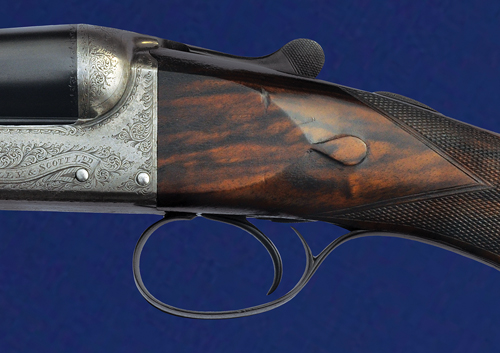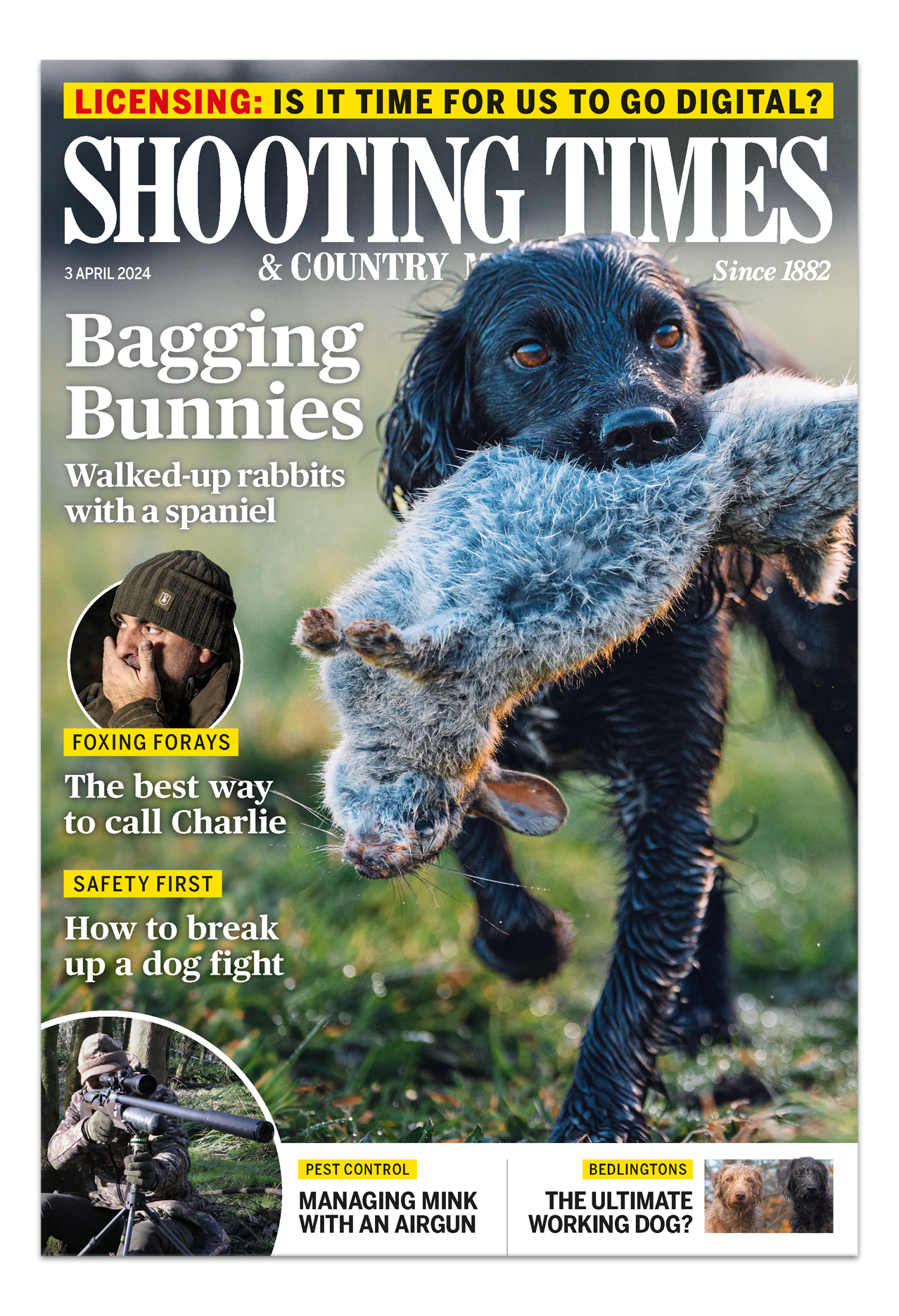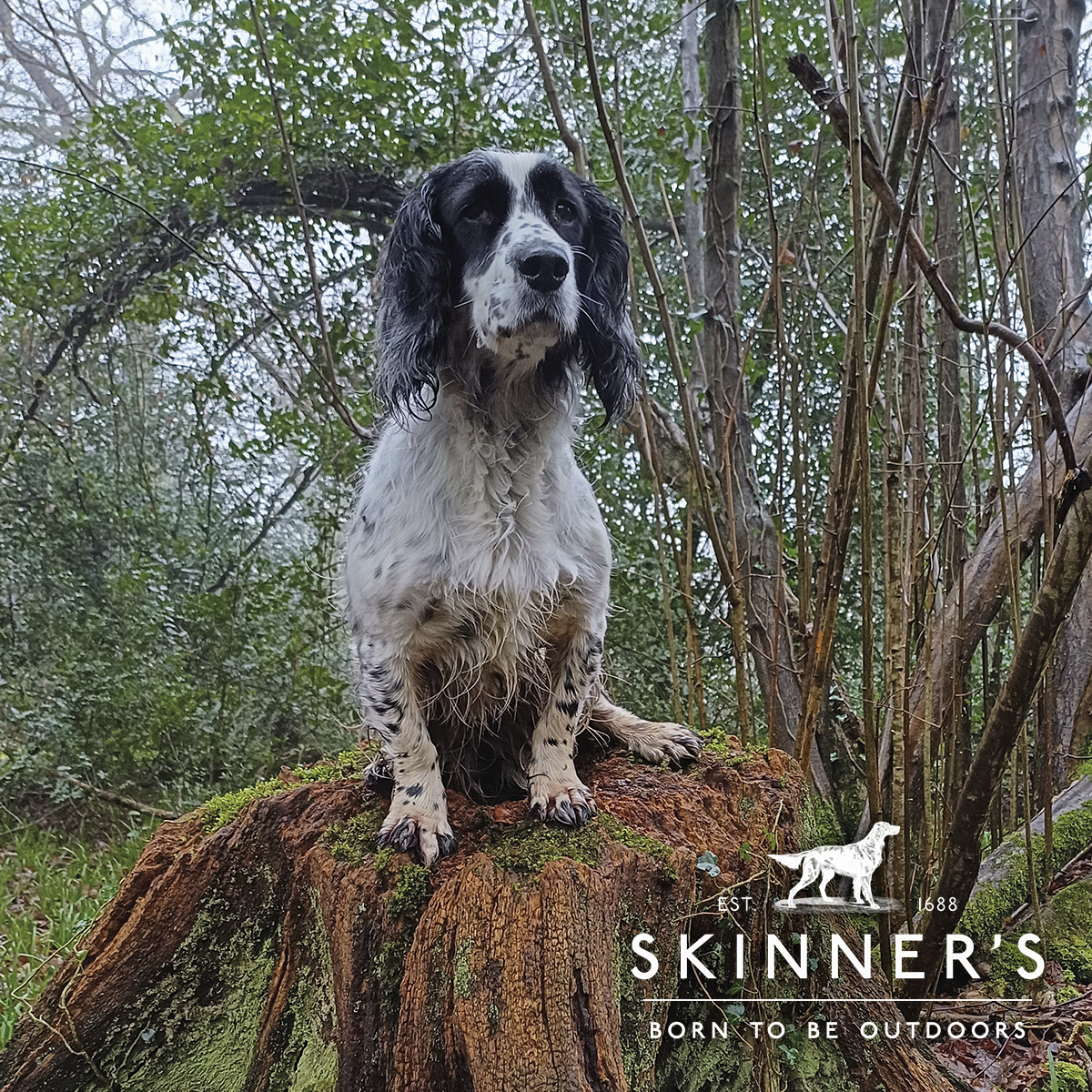Percy Stanbury’s Webley & Scott side-by-side review

Percy Stanbury’s Webley & Scott side-by-side review
Manufacturer: Webley & Scott
We get the chance to test some wonderful guns at The Field, but there has never been an occasion when I have been more interested in the gun under the spotlight.
“Stan” was a Devonian who, for many years, was head instructor and manager at the West London Shooting School.
He was (and remains) famous for his elegant shooting style, passed down to thousands directly through his lessons and indirectly through the best-selling books written in association with Gordon Carlisle: Shotgun Marksmanship, Clay Pigeon Marksmanship and Shotgun and Shooter.

Stanbury’s shooting achievements were vast, with a string of British championships to his credit in various disciplines.
He might well have represented Great Britain at the Olympics, too, had rules concerning professionalism not been so strictly enforced in his day.
As it was, he was a successful competitor from 1926 to 1953 (winning the Devon Championship in 1926 and the English Open in 1953), and was in the England international team for 26 years. His tally included no fewer than 18 British titles.
Back to the main plot, and plot it is, for this article has required some considerable, and most enjoyable detective work.

I knew Doug Florent of the Oxford Gun Company had bought Stanbury?s gun in the Eighties. It was sold to him at Christie’s salerooms on 15 July, 1987.
Doug recently told me, ?The reason I bought it was because of my respect for Percy Stanbury, whom I had known at West London,? where Doug used to run a clay shoot.
Mike Rose [who took over as head instructor] told me he was going to sell it and, unfortunately,
he had already put it into auction. Happily, I bought it nevertheless. When I acquired the gun, it was out
of proof but I reproofed it so people could shoot it again.
I rediscovered this iconic shotgun (long a subject of interest to me, not least because I had once considered buying it) on a visit to Doug and Shirley Florent’s Oxford Gun Company Shooting School.
Doug kindly gave me the opportunity to use the gun and photograph it.

The Stanbury side-by-side has a special aura accentuated by the silver ovals on the butt, which record his championship wins. The serial number is 95188, which suggests it was made in 1921.
It weighs 7lb 7.1⁄2oz but feels lighter. It has very tightly choked (full and super-full), 30in barrels.
These are unusual not just in constriction but because they have a wide, flat and tapered, file-cut rib (and are equipped with a tiny mid-bead 10in from the breech).
The rib is 7⁄16in wide to the rear, 1⁄4in at the muzzles.
Most unusually, the gun is equipped with a single selective trigger (the special work of Roland Bloomer), and bears Birmingham proofmarks for 1.1⁄4oz loads.
It now shows London 70mm marks for 2006 (and has bores, somewhat enlarged from their original dimension, with proof diameters of 18.6mm and 18.7mm).
With an imperial micrometer they measure .732 and .735.
The semi-pistol stock is elegantly proportioned (and not the original).

The measurements are 14.5⁄8in for length, with drop of 1.1⁄2in and 2.1⁄8in, with about 1⁄4in of
cast at heel.
TECHNICAL DATA
This gun, though customised and restocked, is, I believe, based on the Webley 400 proprietary model, which was made (on the interchangeable principle) from 1905 to 1946.
Both models 400 and 500 were fitted with the Webley screw-grip, third-bite system involving a top rib extension (the 1882 patent of Webley and Brain).
There was also a model 300 made from 1922, replaced by 300a in 1939, which was made until 1946 and had a Greener-style cross bolt.
The model 600 (1927 to 1946) was a plainer, non-ejector gun without an extension. Introduced in 1927, it continued in production until 1946.

After the Second World War Webley & Scott brought out Standard and Special models, quickly replaced in 1947 by the 700, 30,000 of which were made from 1947 to 1979 (and which still offer an excellent, second-hand buy).
SHOOTING IMPRESSIONS
Let?s not beat about the bush. This is simply the best side-by-side I have shot (and Stanbury used it for all is clay and game shooting).
Over 30-plus shots, I did not fail to connect. The birds were not especially tough but what impressed was just how effortlessly the gun pointed, how good the trigger was (Webley & Scott single triggers are not usually much praised), and how controllable and soft in recoil it was.
The stock shape, weight and slightly forward balance all suited.
In the words of Doug Florent: “When you pick it up you assume it is going to shoot like a side-by-side, but it shoots exactly like a modern over-under. I suspect that it was part of the reason why he was such a good shot.”
“He based it on a pigeon-gun with rib slightly above the barrel line for most of its length, a single trigger and quite
a high comb.”
Doug can only be applauded for keeping this grand old gun shooting.
It might also inspire others to attempt a bit of sympathetic restoration.
Meanwhile, I am going to attempt a copy, my greatest compliment.








